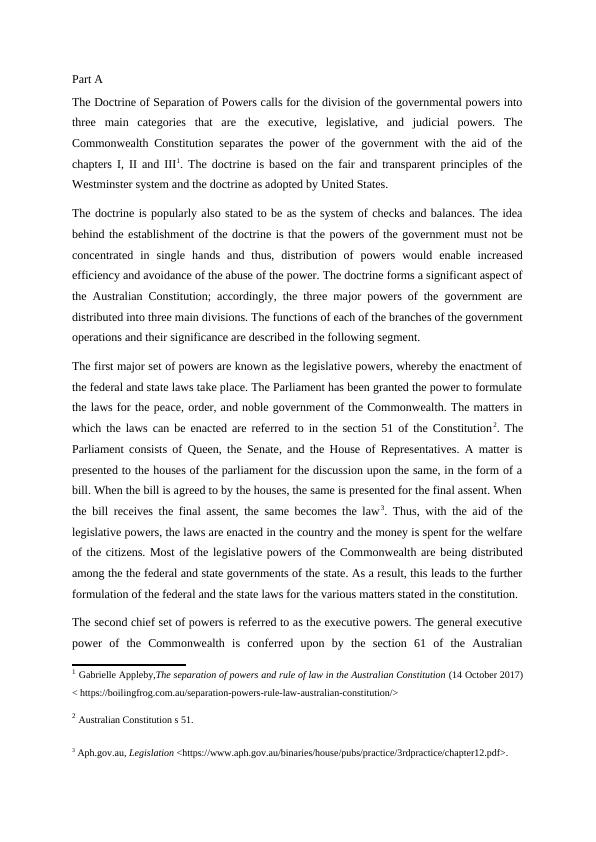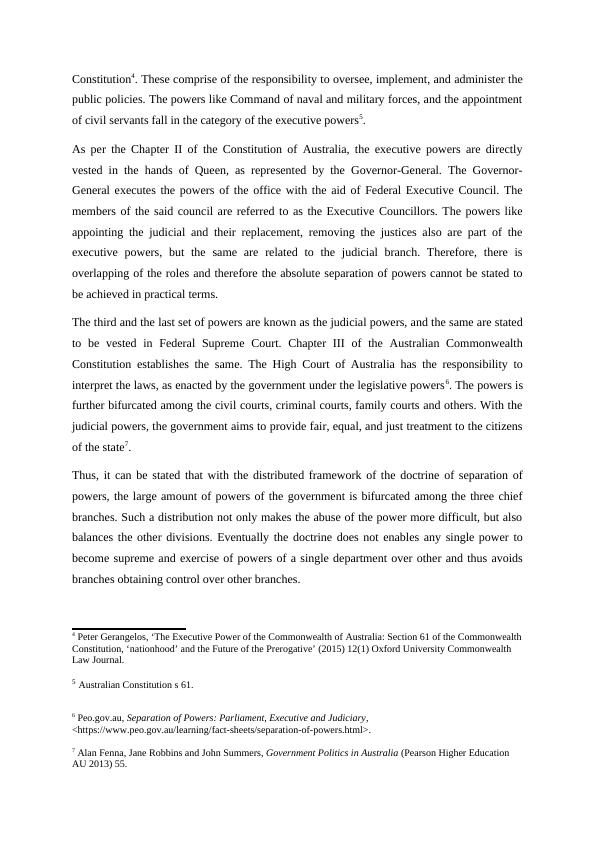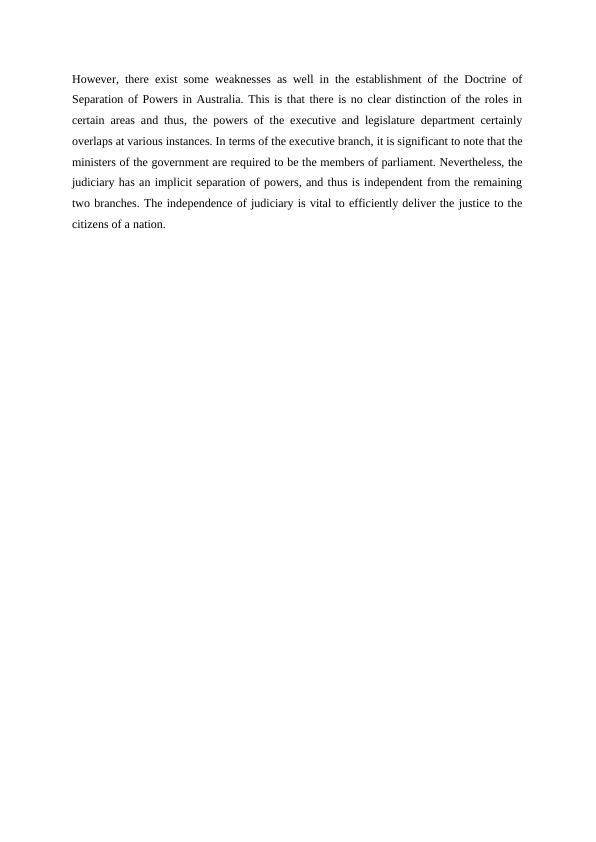The Doctrine of Separation of Powers and Legal Analysis of an Acquisition Case in Australia
Added on 2023-04-24
About This Document
The summary discusses the doctrine of separation of powers in Australia, which divides governmental powers into executive, legislative, and judicial branches. It explores the functions and significance of each branch, as well as the concept of checks and balances. The summary also highlights the weaknesses in achieving absolute separation of powers and the importance of an independent judiciary.In the second part, a memorandum addresses the analysis of an acquisition case involving Events Management Ltd and Rigby Corporate Function Planners Pty Ltd. It examines the essential elements of a valid contract, including offer, acceptance, intention to create legal relations, consideration, competence to contract, and certainty. It concludes that while there is an offer and intention to acquire, acceptance is yet to be confirmed.
The Doctrine of Separation of Powers and Legal Analysis of an Acquisition Case in Australia
Added on 2023-04-24
End of preview
Want to access all the pages? Upload your documents or become a member.



